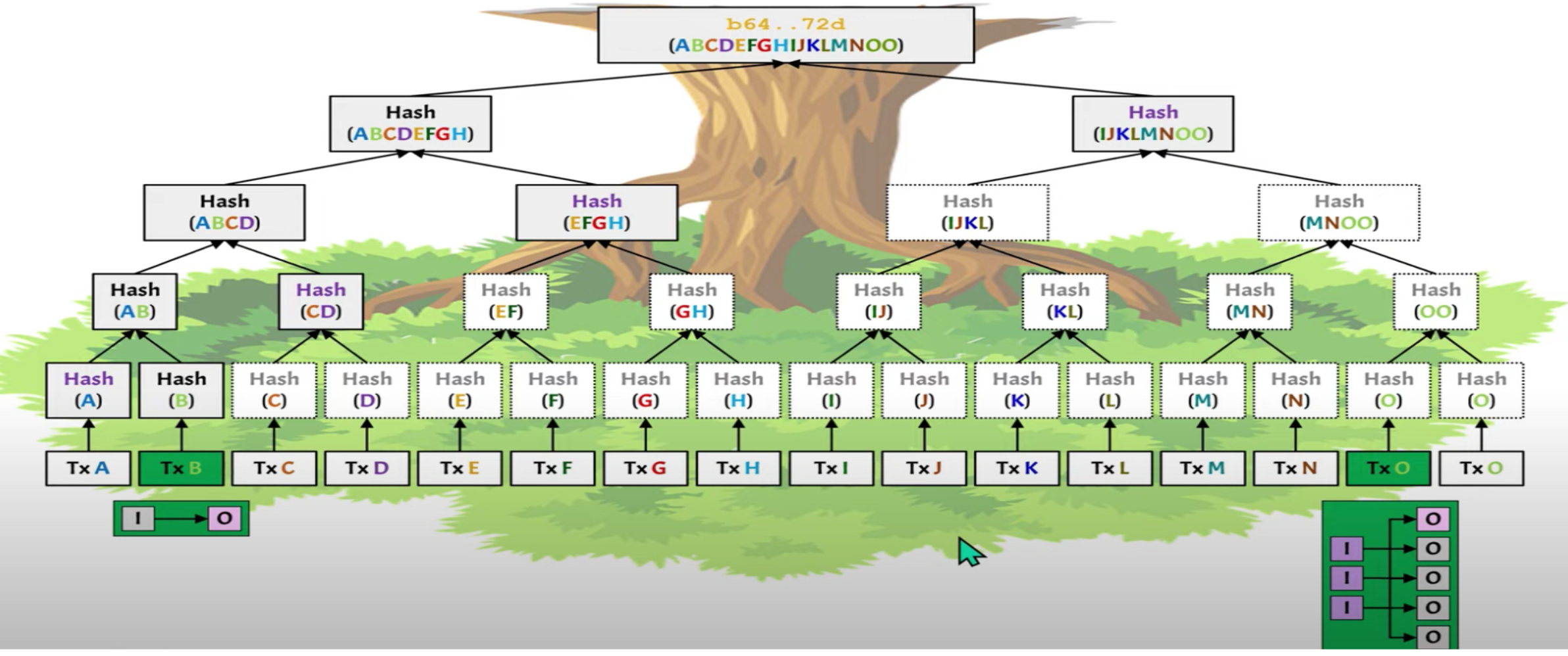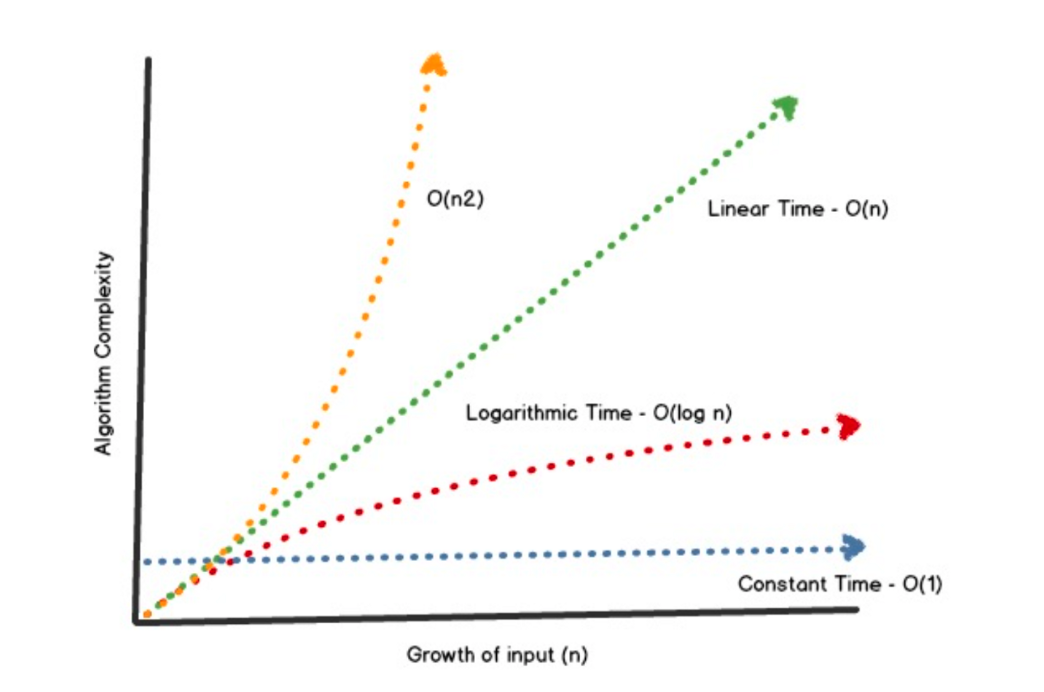How are Merkle trees used in blockchains?
Merkle trees store transaction data efficiently in blockchains. The root hash is committed, reducing blockchain size. Merkle proofs verify data efficiently. They are space and computationally efficient, good for scalability and decentralization.
Previous Section Recap
In the previous section, we looked at what makes up a [basic tree data structure](), including tree vocabulary. Can you define them all by memory?:
- node
- root node
- parent node
- child node
- key
- tree height
- leaves
Merkle Trees In Bitcoin
The design of merkle trees makes them extremely efficient for data verification. In Bitcoin, Merkle trees are used to store every transaction mined on the Bitcoin network in an efficient way:
The diagram above shows the architecture of a bitcoin block. Did you think a bitcoin block contains all of the transactions per block? In a way it does... but via merkle trees!
What happens is, all of the transactions per block are arranged into a big Merkle tree. What actually ends up getting committed into the block and immutable blockchain is that Merkle tree's root hash.
By committing the root hash of the tree, the transaction data can be stored off-chain (full nodes, for example, store these transaction records on a LevelDB integrated into all full nodes).
Thanks to Merkle trees, storage on the blockchain is efficient - you must only commit one piece of data instead of thousands of transactions per block, which would really bloat the system!
A main design purpose behind using Merkle trees to commit a lot of data elements (typically transactions) per block is to keep the size of the blockchain as small as possible.
Given the nature of their usage, blockchains grow perpetually, so you must account for efficient data storage. Keeping the blockchain size from becoming bloated means more people can support running full nodes which helps network decentralization.
Thanks to Merkle trees, there is an efficient way to verify that some data exists in a root hash. Take the image below... can you imagine how bloated each block would be if every single tx needed to be stored? Much better to store just ONE root hash representing all the transactions per block!

Merkle Proofs
The benefit of the Merkle tree design -- a recursive hashing-based algorithm -- is that it allows for efficient proof that some data exists within the root hash construction (actually contained in the block!); in other words, it allows for Merkle proofs. A Merkle proof confirms specific transactions represented by a leaf or branch hash within a Merkle hash root.
So if anyone ever needs to prove that a transaction existed at one point in time in the blockchain, they just need to provide a Merkle proof.

In the diagram above, say you want to prove that C (some random tx) exists in this block. Thanks to Merkle proofs, you only need 3 total pieces of data: D, H(A-B), H(E-H) to construct the tree root hash: H(A-H). That might not seem like much with such a small tree, but what about a tree containing over 10,000 transactions? If one is able to successfully construct the root hash, then that is proof enough that their transaction was indeed part of that Merkle tree at that time. Data verification FTW!
Merkle Trees Use Cases
Merkle trees are:
- space and computationally efficient
- good for scalability and decentralization
- no need to pack a block full of transactions… just commit a Merkle root hash to it and keep transactions in other places that can handle them
In deeper terms, they:
- They significantly reduce the memory needed to verify that data has maintained its integrity and hasn’t been altered.
- They require less data to be broadcast across the blockchain network to verify data and transactions. This improves the efficiency of a blockchain.
- They allow for Simple Payment Verification (SPV), which helps you to verify a transaction without downloading an entire block or blockchain. This allows you to send and receive transactions using a light-client node — more commonly known as a crypto wallet.
When verifying data using a Merkle tree, there is a Prover and a Verifier:
- A Prover: Does all the calculations to create the merkle root (just a hash!)
- A Verifier: Does not need to know all the values to know for certain one value is in the tree.
Merkle trees are a huge benefit to the Verifier. You either produce a proof successfully, meaning data verification passes, or you don't, meaning your piece of data was not present when the Merkle root hash was calculated (or you performed the calculation wrong!).
Logarithmic Scaling

The amount of proof pieces that you need scales logarithmically to the size of the array of data you need to feed into the Merkle tree hash algorithm.
Merkle Tree Vocabulary Summary
Final terminology for Merkle trees:
- Merkle tree: a structure used in computer science to validate data
- Merkle root: the hash contained in the block header, which is derived from the hashes of all other transactions in the block
- Merkle path: represents the information which the user needs to calculate the expected value for the Merkle root for a block, from their own transaction hash contained in that block. The Merkle path is used as part of of the Merkle proof
- Merkle proof: proves the existence of a specific transaction in a specific block (without the user needing to examine all the transactions in the block). It includes the Merkle root and the Merkle path
Conclusion
Merkle trees are a very popular data structure in blockchains. It's important to understand the low-level of blockchain storage and the implications of such decisions. Keeping data storage lean and efficient is the reason behind using structures like Merkle trees - this understanding is essential as you start building out dApps, you always want to be lean and efficient with your data storage. Why? Because on Ethereum, the less efficient your use of data storage, the more expensive your program will be for you and your users.
In the next section, we will look at Patricia Merkle Tries, a data structure widely used in Ethereum.
Learn More About Blockchain Data Structures
Alchemy University offers free web3 development bootcamps that explain blockchain data structures and help developers master the fundamentals of web3 technology. Sign up for free, and start building today!
Updated almost 2 years ago
